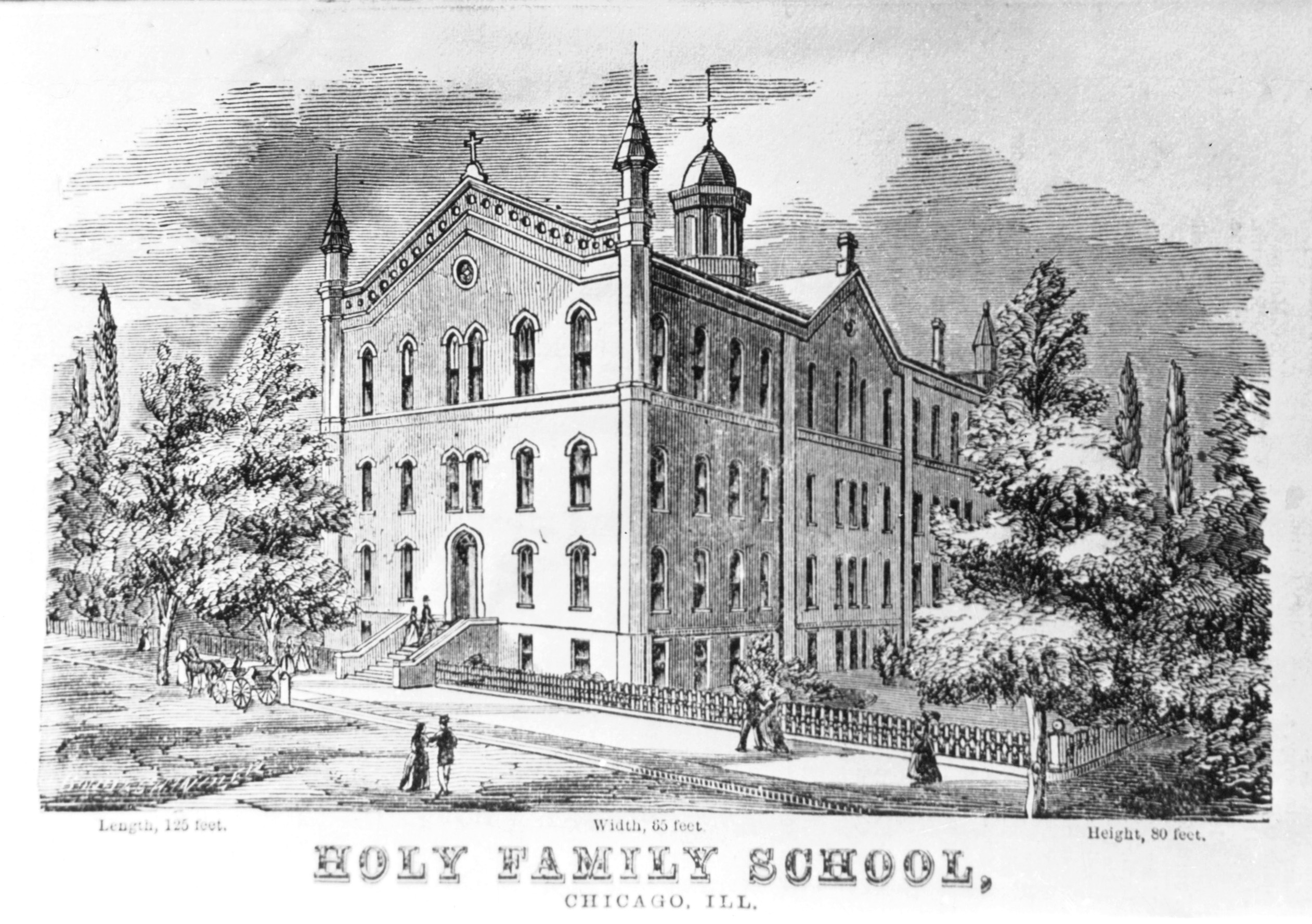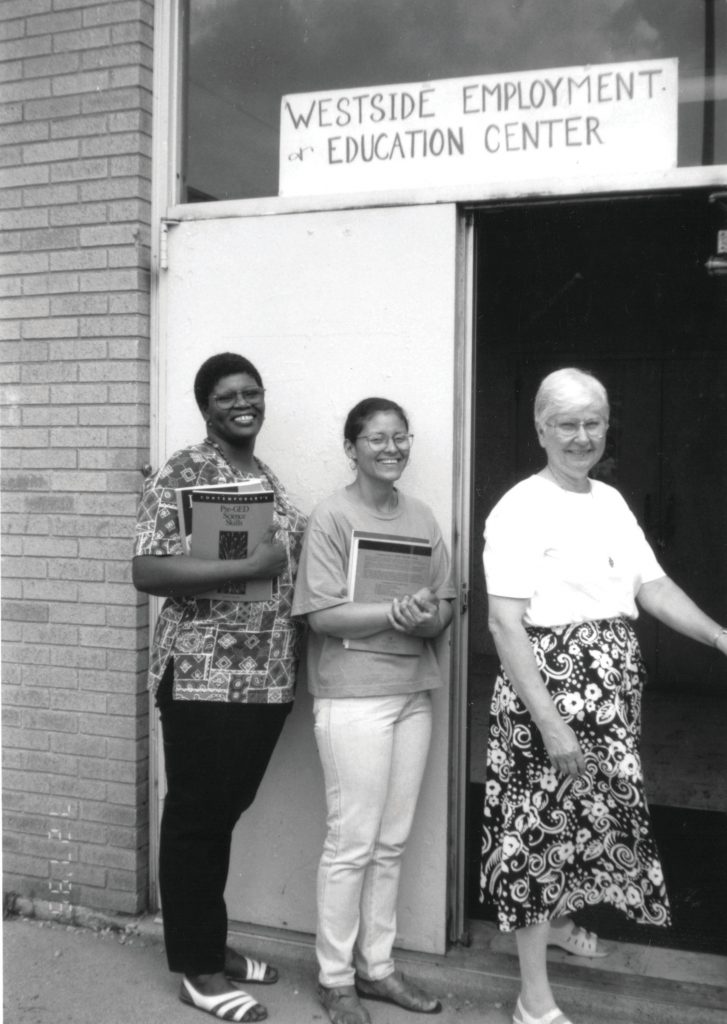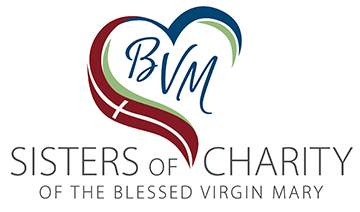Holy Family Parish, Chicago: A Snapshot of 160 Years
In the late 19th century, Chicago was the fastest growing city in the world; Holy Family probably was the fastest growing parish. It comprised all of Chicago west of the river, and the parish kept spreading.
The first pastor, Fr. Arnold Damen, S.J., a famous preacher and devoted educator, laid the cornerstone of the first church on 12th Street, now Roosevelt Road, on Aug. 26, 1857; it had a classroom on each side with sliding doors that were opened to expand the church for Sunday.
Fr. Damen set up a system of schools in the huge parish—including a college which became Loyola University. Early in 1867, Fr. Damen preached missions in the Diocese of Dubuque, Iowa, where he met the Sisters of Charity of the Blessed Virgin Mary and invited them to Chicago.

BVMs Arrive in Chicago
On July 16, 1867, the BVMs opened two schools in the parish. Over time, BVMs taught in approximately 30 schools within the city and more in the suburbs. The early immigrants were largely German and Irish, but other nationalities came later and wanted parishes where they could hear their own language. The vast Holy Family territory was divided many times into new parishes. In their glory days, Holy Family schools enrolled roughly 5,000 children.
On Oct. 8 and 9, 1871, much of Chicago burned. Fr. Damen was in the East preaching when he heard of the fire and he prayed all night. The fire was moving west toward Holy Family when the fire swerved north and the parish was saved.
It became a refuge. Bishop Feehan, the sisters and children from St. Joseph Orphanage, and many others who fled there were sheltered in the schools while Agatha Hurley, BVM led the sisters, who distributed food and other necessities. Dubuque residents immediately sent bread and cheese for 100,000 persons and wagonloads of supplies later. The wider world responded generously.
Ethnic and Ministry Diversity Emerge
Rebuilding the city drew workers and entrepreneurs. The ethnic composition of the parish changed to mostly Italian and then more Hispanic, although many Hispanics attended Spanish-speaking St. Francis of Assisi Church, just up Roosevelt Road. Its Sunday congregation was much larger than Holy Family’s.
For a while St. Francis Church was closed as unsafe; the parish was combined with Holy Family, the Claretian priests moved to Holy Family, and the Jesuits left. In 1984, the ceiling of Holy Family collapsed so that big church also was unusable; a chapel was arranged in the large backroom where the food pantry had been and the food pantry moved to a portable classroom outside.
BVMs Otilie Sana and Marion (John Patrice) Murphy worked the pantry for years, but volunteers have taken over today. Friends of Holy Family collected money for 10 years to renovate the church, which is open and beautiful again.
One big change was the building of ABLA Homes, an acronym for the names of four housing projects just south of Roosevelt Road, with 3,596 units and an estimated 17,000 residents, about twice the number of tenants registered. Most of them were black and few were Catholic.
Francilla Kirby, BVM and others who visited ABLA realized that the tenants, like many Hispanic parishioners, needed jobs—that led to Westside Employment Education Center (WEEC), which taught adults reading and math, offered GED certificates, and counseled them on how to apply for and hold a job. Kathleen (Patrick Louis) Doherty, BVM was an organizer, teacher of business skills, and a board member even after retirement. Bilingual Theresa Gleeson, BVM was invaluable as a teacher. Mary Therese (Marcina) Freymann, BVM worked as consultant for computer classes.

Another major change was the University of Illinois at the Chicago campus just east. Students and faculty filled the neighborhood. The university medical school led to growth of local hospitals, additional medical facilities, and new housing.
Within the parish, BVMs Alice (Alissio) Caulfield and Marion Murphy served as parish administrators when the religious orders could not supply priests as pastors. Today, there is a diocesan pastor. Led by BVM Mary Therese (Kenneth Michael) Cusack, Holy Family Grade School combined with two other schools to become Children of Peace School, a name chosen by the children.
In 2011, BVMs left the fourth of the convents they had occupied on May Street. Most retired to Mount Carmel in Dubuque, but they maintain contact with the people.
About the author: Mary A. (Michael Edward) Healey, BVM is retired and lives at Mount Carmel.
This story was featured in:
Winter SALT 2018: Planting Seeds of Hope
If you would like to receive Salt, contact the Office of Development for a complimentary subscription at development@bvmcong.org or 563-585-2864.
